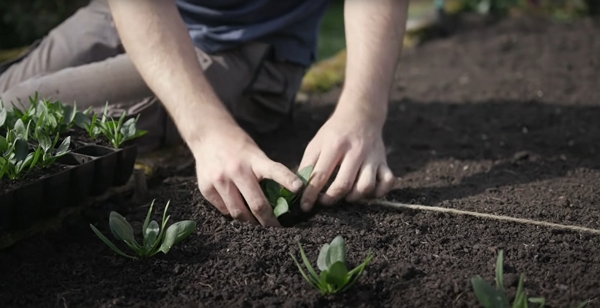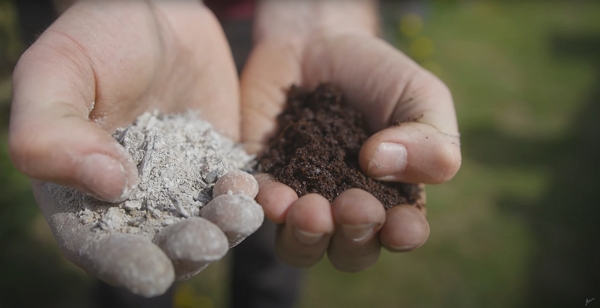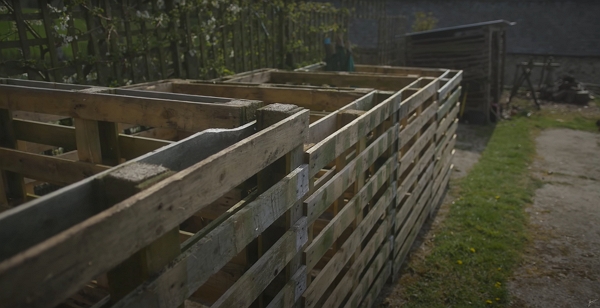Creating compost isn’t always easy and Huw shares in this article how to grow vegetables with it with no investment.
Thanks to Huw Richards for sharing his wisdom and knowledge! I wrote the following notes watching the video published on Huw Richards’s channel. You can watch it using this YouTube link.
It’s important to prioritize making your own compost the following tips are short-term adjustments.
If you aren’t making enough compost, by the end of the article, you will have an action plan.
Compost levels
The first tip is to mix compost and top soil together to optimize the use of compost.
Using 1 part good compost and 3 to 4 parts top soil is a good start.
Mulching
When you don’t have enough compost, mulching with alternatives happens to be a solution:
- woodchip
- dead leaves
About perennial plants
They aren’t super nutrient hungry plants for using woodchips will suffice them.
Grass clippings
It’s the most underutilized material and you must get grass that wasn’t sprayed.
Go ask around your neighborhood and it’s very likely, if you don’t live in the city, that you will find people delighted to give away their grass clippings.
The important thing when applying grass clipping is to apply it in thin layers, maximum two to three centimeters, especially in a UK-like climate.
Why? Grass clippings can make excellent slug accommodation and your plants won’t like it!
Also, it can form a thick sludge that can smell.
If you want to be sure, sprinkling the grass on the soil will be fine. Perform the task in the morning of a sunny and the grass will decompose rather quickly.
Applying grass is easy because it produces a lot and you can sprinkle it once a month.
Wood ash and coffee grounds
In wood ash, you will find charcoal that, once broken up, can soak up all the nutrients and provide a slow release of those nutrients to the plants.
Wood ash is high in potassium and phosphorus, both good for plant growth. However it’s missing nitrogen.
That is when the coffee grounds come into the game.
The myth about coffee ground being too acid isn’t a reality, according to Huw (others like Charles Dowding).
In fact, when you brew the coffee, a lot of the acidity goes away.
So, you mix those two ingredients and you apply around the plants a sprinkle of the mix once a month. It doesn’t need to be too much.
If possible, do it right before some rain or watering. The water you will help the mix dissolve and go down the plant’s roots.
Chop and drop technique
Comfrey is a must-have for the gardener.
I do have half a dozen plants that I’m starting to propagate. The plant provides a huge quantity of nutrient-rich leaves. It can replace animal manure.
The advantages of comfrey are numerous:
- Letting comfrey flower is a fantastic bee restaurant.
- It’s a dynamic accumulator: its long tap root brings up a lot of the minerals in the soil.
- It’s a compost activator
- It is great for mulching beds
Liquid feed
The advantage of liquid feed is that it provides soluble nutrients to the plant.
Using comfrey again, you make your own within 2 or 3 weeks.
See this article for a detail explanation about liquid feed.
The result will stink, but it is fine. Your plant will thank you for it!
Diversity
From all those methods we have detailed, don’t use one of them only throughout the year.
It will create a nutrient unbalance in the garden. In nature, you will find out that diversity brings success.
Use the little but often approach of a range of different solutions.
Homemade compost
It is huge not to rely on buying compost.
Sacrifice some of you growing space to make your own.
The biggest challenge is to gather material. I find this very true and it requires a lot of ingenuity to find sources.
One key advice I’d give is to look close to you. You will be surprised about how much your neighborhood has to offer.
Bulk compost
If it is available in your area and if it is approved for organic gardening, go for it. For Huw, it cost £40 per ton.
The closest I can get is 26 euros per ton, but I need to rent a truck to bring it home, so in the end, it cost 115 euros per ton… I’m still very hesitant at the moment.
You can maybe purchase it as a group, hence lowering the cost. In my case, I can have it delivered but I will need a rather big storage area because they only deliver a minimum of 10 tons!




